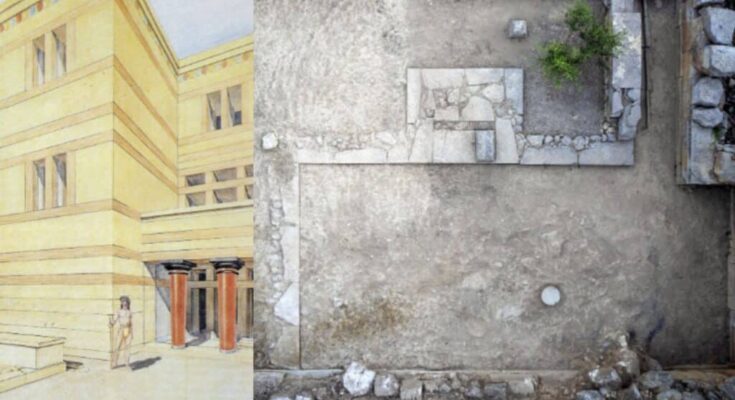
The 2024 excavation of the Minoan Palace of Archanes resulted in a remarkable and unusual discovery that stunned archaeologists and experts. According to Greece’s Ministry of Culture, a unique gate sanctuary, a truly special artifact, was discovered for the first time in a Minoan palace on Crete, Greece.
The significant archaeological excavation was headed by archaeologist Dr. Efi Sapouna-Sakellaraki of The Archaeological Society of Athens. The team of archaeologists attempted to complete the mysterious puzzle of the three-story palace edifice which, along with the one in Knossos, played a crucial role in the development of Minoan civilization on the Greek island of Crete.
The gate sanctuary was uncovered just outside of the palace’s main gate, where four altars and a stone platform had already been found, emphasizing the area’s religious significance. This year’s excavation revealed yet another pyramidal base on the platform, with a probable third base partially surviving in the western arm.

Luxurious palace rooms in Minoan Palace in Greece
In the announcement of the Ministry of Culture of Greece, it is stated that, in the southern portion of the excavation beneath a layer of fallen stones and soil, another Mycenaean layer indicating fire damage was discovered, revealing secrets from the past.
This layer includes a large number of shattered Mycenaean goblets (“kylikes”) and small Minoan artifacts, including a stone relief vessel fragment and a piece of rock crystal.
On the other hand, the northernmost section of the Minoan palace revealed two- and three- story chambers of a luxury wing of the palace. These structures came with rooms that were connected by passageways and doorways.
There were shiny gypsum stones, slate flooring, and ornate plaster bands there, as well as fallen plaster fragments in blue and red.

The significance of this Minoan Palace
Sir Arthur Evans originally referenced the Minoan Palace of Archanes in reference to exceptional and noteworthy artifacts, likely from the nearby Minoan cemetery at Fourni Hill. These are now housed in the Ashmolean Museum in Oxford, England.
Evans investigated vast wall surfaces of the archaeological sites of the area and dug a section of a circular aqueduct near the palace in search of Knossos‘ “summer palace.”
However, Yannis Sakellarakis’ mapping of these ruins resulted in the discovery of the center of the palace, which revealed several architectural artifacts. The palace’s archive and theater areas were discovered in a nearby area, too.
The 2024 excavation and subsequent discovery of a gate sanctuary at the Minoan Palace of Archanes on Crete, Greece, led by Sapouna-Sakellaraki and a professional team of archaeologists, proudly builds on the work initiated by Yannis Sakellarakis in the 1960s and continued by Sapouna-Sakellaraki in the decades thereafter.



